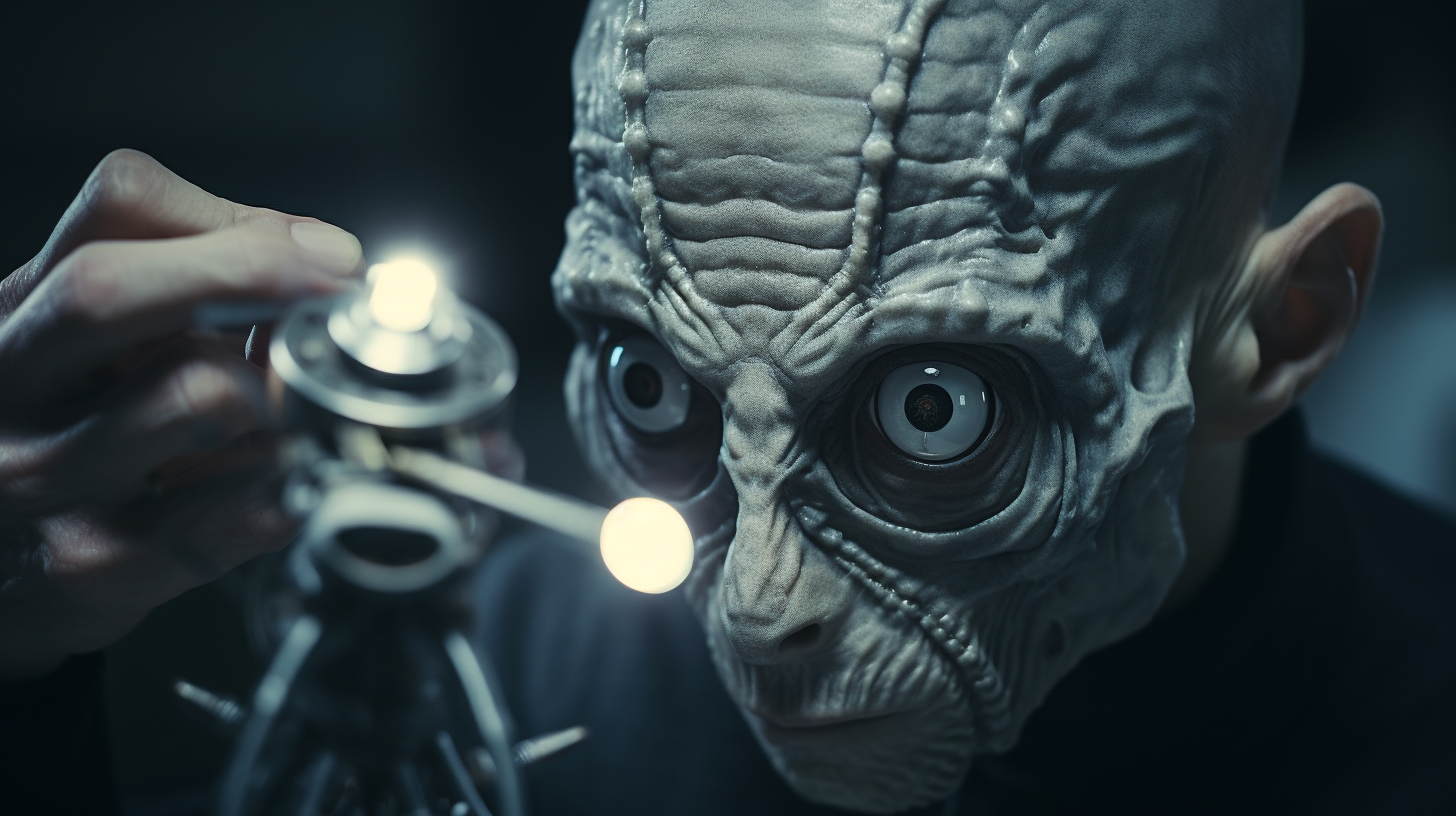In the world of archaeology, surprises and mysteries often lurk beneath the surface. Just when we thought we had seen it all, a peculiar artifact comes along, leaving experts scratching their heads.
This is precisely the case with a skull discovered in Peru that boasts an unusual feature—an enigmatic metal implant. But before we delve into the realm of speculation and conspiracy, let’s take a closer look at the facts surrounding this ancient anomaly.
The skull, which was found in Peru, features an elongated shape that has piqued the curiosity of archaeologists and enthusiasts alike. While elongated skulls are not unheard of in the region, it’s the presence of a mysterious metal implant within this particular specimen that has set it apart from the rest.
The implant consists of two parts—an oblong shape on top and a circular component at the bottom. At first glance, it doesn’t appear to be a natural part of the skeletal structure.
Forensic anthropologist Dr. John Verano, who specializes in prehistoric skulls, was initially baffled by the image of the skull with its peculiar implant. He remarked, “I’ve never seen anything like this. It doesn’t look genuine to me.” However, uniqueness does not necessarily equate to inauthenticity.
Author Heidi Hollis points out that elongated skulls have a long history in Peru, making them a less surprising aspect of this discovery. What truly sets this specimen apart is the inclusion of a metal plate within the skull. This begs the question: Could this skull and its implant hold the key to ancient extraterrestrial communication?

In popular culture, we often associate metallic objects with advanced technology, and the idea of a cranial implant has inevitably sparked notions of alien communication devices.
The concept isn’t entirely far-fetched, given that we routinely microchip our pets for tracking purposes. But could this cranial implant serve a similar purpose for ancient beings?
Genetic testing of other Peruvian elongated skulls has revealed mitochondrial DNA mutations not found in any known human or animal species on Earth. This, coupled with the presence of the metal implant, adds a layer of intrigue to the mystery. Could this be evidence of contact with otherworldly entities?
To unravel this enigma, we turn to experts in the field, such as anthropologist Kathy Strain, who emphasizes the prevalence of archaeological hoaxes involving Peruvian skulls.
However, Strain also notes that the skull’s authenticity can be verified through careful examination of its bone structure and radiocarbon dating. The latter would conclusively confirm its age, potentially shedding light on its origin and purpose.
Dr. Ed Barnard, an archaeologist, reminds us that elongated skulls, though often associated with aliens, have historical ties to human practices, particularly cranial deformation. In South America, cultures like the Paracas engaged in this practice, primarily among their elite.
However, some individuals who claim to have been abducted by aliens report having metal devices implanted in their bodies, raising intriguing possibilities about the link between ancient human practices and extraterrestrial encounters.
Recent discoveries, such as obsidian surgical tools found in what is believed to be a doctor’s grave in Peru, suggest that ancient South Americans possessed the knowledge and skill to perform complex medical procedures, including trepanation.
Trepanation, the practice of drilling or removing bone from the skull, was employed to treat trauma and swelling of the brain. These findings provide crucial context for understanding the capabilities of ancient societies.
Despite the tantalizing evidence, doubts persist about the authenticity of the skull and its metal implant. Dr. Verano remains skeptical, citing the unfamiliarity of the metal composition with what is typically found in the Andes. In his view, the artifact might be a clever forgery.
Video:
In conclusion, the skull with its mysterious metal implant presents a captivating puzzle. While it is likely an example of ancient trepanation, confirming its authenticity requires radiocarbon dating.
Until then, we should approach this artifact with a healthy dose of skepticism, as well as an open mind to the possibilities it may one day reveal about our ancient past. Whether it’s a relic of extraterrestrial communication or a testament to ancient surgical prowess, the truth remains tantalizingly out of reach.

20 thoughts on “Decoding the Enigmatic Skull with a Mysterious Implant”
Comments are closed.